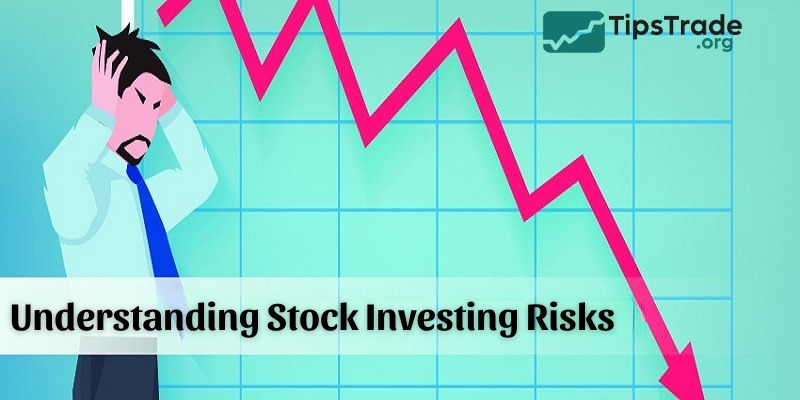The stock market is always attractive to investors because of its high profit potential, but it also comes with many potential risks. Stock investing risks can come from market fluctuations, business factors or crowd psychology. Understanding the risks and knowing how to manage them effectively is the key to helping investors protect their capital and achieve sustainable growth.
What are stock investing risks?
Stocks are a form of investment that can generate high profits. Many people choose to invest in stocks, bonds,…from their idle money to create passive income, but it also carries the risk of loss.
Stock investing risks are understood as the possibility of the value of an investment decreasing, causing investors to lose money, even lose everything. Risks can come from many different sources, understanding each type of risk can help investors avoid or reduce losses.

>>See more:
- Top 6 Benefits of Investing in Stocks You Might Not Know
- Common Stock Risk Management Strategies for Investors
- What Are Shares and How Do They Work?
- Market Cap Stocks: What They Are and Why They Matter for Investors
Major types of stock investing risks
Stock investing risks are divided into two main types: Systematic risk and Unsystematic risk.
Systematic risk
Also known as market risk. This is the risk that occurs when market fluctuations occur such as:
- Macroeconomic factors: total supply of goods increases while total demand decreases, inflation…
- Factors related to politics, law,…
Systemic risk will affect the entire economy in general and almost all sectors in the stock market in particular. Systemic risk including 4 types:
Commodity risk
When investors participate in the stock market, they are investing in the goods and services of businesses. The price of goods will be affected by macro factors, such as supply and demand.
For example: When gasoline becomes scarce, the price of gasoline increases, causing the price of other goods to increase. When commodity prices change, the risk in stocks will be greater, many industries will be affected, causing stock prices to fall.

Model risk
Model risk occurs when investors use financial models to calculate and analyze company data when affected by objective factors. However, the market always contains unexpected elements and does not follow any rules. This can lead to errors in calculation results and the risk of loss.
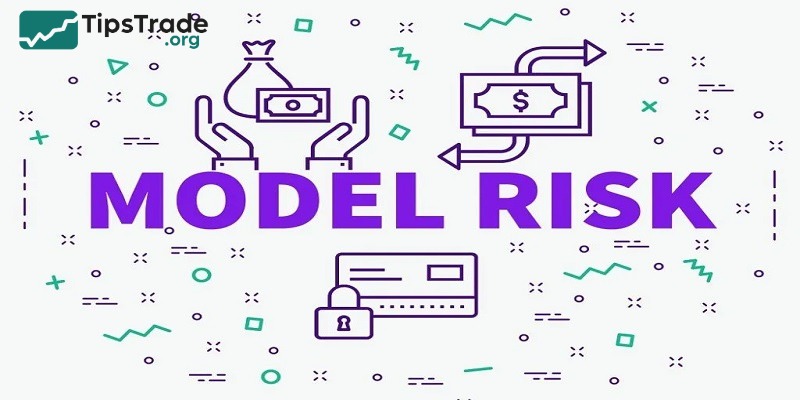
Liquidity risk
Stock liquidity risk occurs when the market is affected by factors that cause trading conditions to change, thereby causing instability in securities. Securities liquidity refers to the ability to convert shares into cash in transactions and vice versa. When liquidity risk occurs, this will affect the conversion of securities into cash.
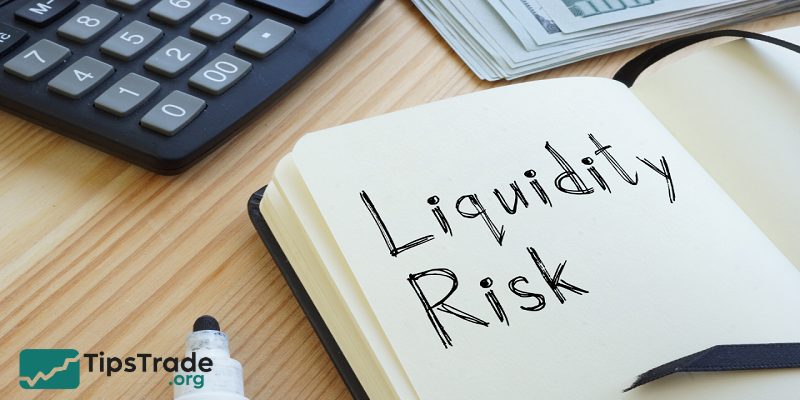
Inflation and interest rate risks
This is a risk that will affect the bond market more than the stock market. When in fact the nominal interest rate we receive already includes the rate of inflation, when the rate of inflation increases, the real interest rate we receive will decrease.
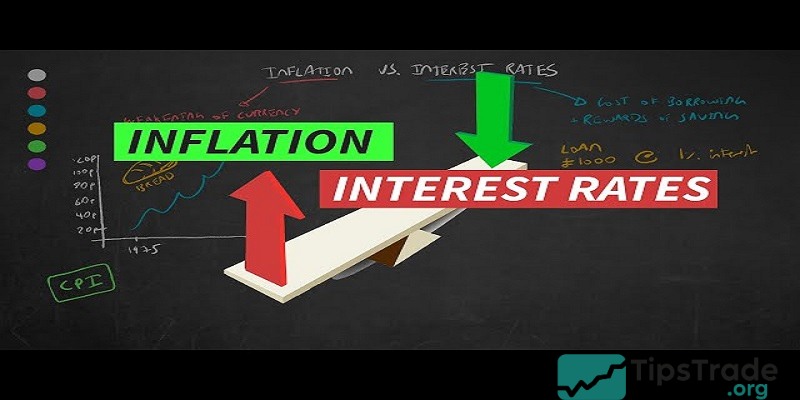
Unsystematic risk
Also known as idiosyncratic risk. This is the type of risk that only affects a certain industry or company. Unsystematic risk occurs when there is a change in management, a product recall, or legal issues that reduce the company’s revenue. Additionally, when a new competitor appears and takes over the company’s market share, it can also lead to unsystematic risk.
Unsystematic risk is divided into four types:
Obsolescence risk
The risk of obsolescence occurs when a company or business has a competitor with more potential products and goods than its own and takes over the market share of the company. At this time, the company’s goods and services will become obsolete if the company does not have an attitude of improvement. From then on, fewer people will invest in the company, thereby reducing the company’s stock.
Media risk
This is a risk that has a great impact on the value of a company’s stock. Media risk occurs when rumors and bad events appear in a company that affect its reputation. As a result, fewer people will invest in it and the company’s stock price will plummet.

Audit risk
Audit risk arises due to ineffective control of costs and capital resources by the business management, causing damage to the business process. This in turn causes the stock price to decline.
Rating risk
Rating risk refers to the rating of a business through the situation of its production and business activities. When a business does well, its stock price will increase and vice versa.
The risk ranking of the enterprise will be ranked in order A, B, C, D corresponding to the safety level of the stock with AAA being the highest, corresponding to the risk when investing in the stock of this enterprise is almost zero. And conversely, D is the lowest ranking, meaning the risk when investing in the stock of this enterprise is very high.

Legal risks
Legal risks often occur to new investors entering the market, who do not fully understand the legal regulations when trading. If they do not have a good grasp of the law, investors and businesses will also face risks from capital regulations or changes in fiscal and monetary policies,…
Other types of stock investing risks
Besides the two main types of risks: systematic risk and unsystematic risk, there are other risks in the stock market such as:
- Exchange rate risk: When investing in a foreign market, investors need to consider how exchange rates can affect asset prices. When exchange rates move lower than expected, this can pose a risk to investing in a business and vice versa.
For example, when you are in Vietnam and invest in the stock of an American company. When the exchange rate between the Dollar and the Vietnamese Dong increases, you will get more profit.

- Country risk: Refers to the risk that a country will not be able to meet its financial commitments. If a country fails to meet its financial obligations, this will cause harm to the functioning of financial instruments within that country as well as with countries that cooperate with it. Country risk is often associated with stocks, bonds, mutual funds and investments issued within a country, often found in emerging markets, or countries with serious trade deficits.

The risk-return relationship
A fundamental concept in finance is the relationship between risk and return. The model below illustrates this inverse relationship. The higher the level of risk an investor is willing to accept in investing in stocks, the greater the potential return the investor can receive.
Each investor will decide the level of risk that he can accept to receive a desired return. This risk appetite will be decided based on factors such as age, income, investment goals, personality.
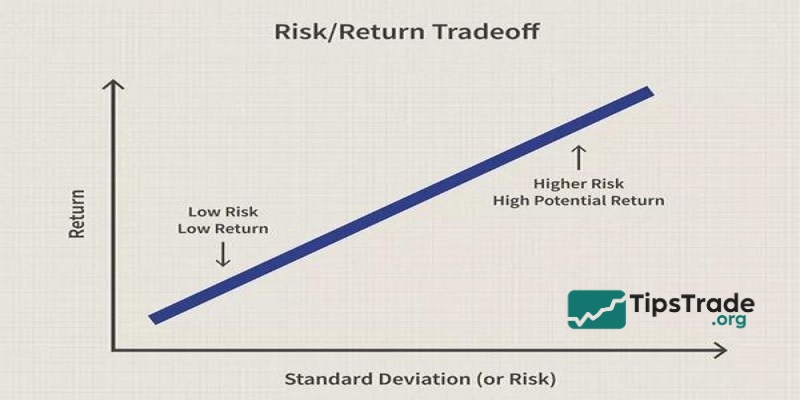
For example: When comparing the returns from government bonds and corporate bonds, government bonds – one of the safest investment portfolios, will bring lower returns. Because businesses will be more likely to go bankrupt with the government, meaning the risk of default for corporate bonds is higher, so investors will receive a higher return. So, depending on the “risk appetite” of each investor, they will decide whether or not to choose government bonds or corporate bonds.
Stock investing involves many risks, should you join?
There are many risks that can occur in the stock market, seriously affecting the value of stocks and bonds, causing many investors to lose money, even go bankrupt. Many people wonder whether they should participate or not?
In fact, any form of investment with high returns comes with high risks. Investors with a lot of knowledge and experience, who know how to grasp the market and manage risks well can avoid unsystematic risks and minimize losses from systematic risks.
Investing in stocks is not a gamble, but requires learning and research, specific planning, and a stable mentality in the face of fluctuations. When knowing how to seize opportunities to overcome difficult periods of the market, investors will reap large profits.
Investing in the stock market will result in losses, profits or huge profits depending on the investment strategy as well as how to face and resolve risks. You should not be too cautious about what you may lose and miss out on attractive profit opportunities.

How to manage and mitigate stock investing risks
Risk is always present and will be encountered by any investor participating. Although it cannot be completely eliminated, you can minimize investment risks with the following methods:
Diversify your portfolio
A basic and effective strategy for reducing stock investing risks is portfolio diversification. This means spreading your portfolio across different financial products with different levels of risk: stocks, bonds, mutual funds, ETFs and other fund certificates. This way, when one part of your portfolio declines, the remaining instruments can continue to increase in value.

Focus on long-term stock investment
Long-term stock investing are less affected by market fluctuations. Long term investments offer the opportunity for sustainable returns.
Conduct thorough research
Understanding the nature and characteristics of the market will help investors have a stable and alert mentality in analyzing and capturing trends. Therefore, constantly learn new knowledge and improve your market analysis skills.

Invest in a professional brokerage firm
To keep your investment safe and profitable, you need to choose a professional brokerage company with fast order matching, transparent stock market, accurate information and no price manipulation.
Be disciplined when investing
To invest safely and effectively, you need to have a plan and principles, and follow discipline. When trading, investors need to have a clear price target and adhere to the loss/profit limit. This will help you not to be caught up in unexpected fluctuations and make emotional decisions.
Stock investing tips you should know
Learning from successful investors in the stock market will help you find the shortest and safest path to success.
- Determine the appropriate investment school: Depending on your risk appetite, practical experience, time spent monitoring the electronic board, placing orders to choose long-term or short-term investment, value investing or swing trading…
- Determine investment methods and strategies
- Always learn from experts, investment gurus, books…
- Consult experts or stock investment specialists
- Determine investment principles: Principles of buying, selling, taking profit, cutting loss…
- Discipline: Stick to the rules you set, avoid trading based on temporary emotions.
- Always review your portfolio to add good stocks or remove bad ones.
- Keep a steady mind in investing, avoid following the crowd.

Conclusion
It can be seen that stocks have many risks, however, this is still a potential investment channel that you cannot ignore. Hopefully, the stock investing risks above have helped investors have more information to come up with effective risk management methods. Please carefully evaluate and diversify your investment portfolio to limit risks and achieve financial goals.

